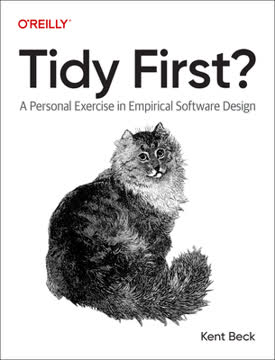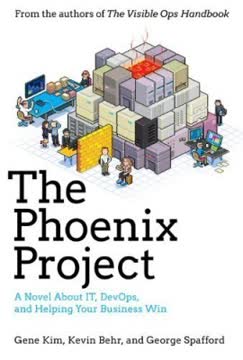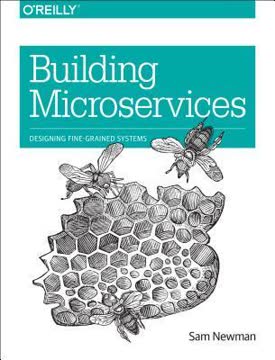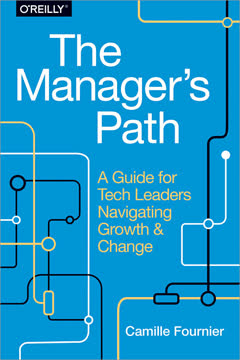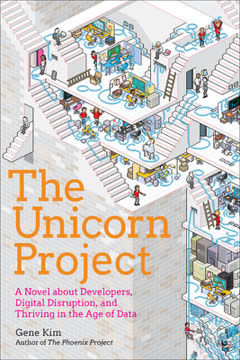가지 주요 요점
1. 팀 구조를 통해 소프트웨어 아키텍처를 형성하는 Conway의 법칙
시스템의 아키텍처와 조직의 아키텍처가 상충할 경우, 조직의 아키텍처가 승리한다.
커뮤니케이션 구조의 중요성. Conway의 법칙은 조직의 커뮤니케이션 구조가 그들이 만드는 시스템의 설계에 직접적인 영향을 미친다는 것을 보여줍니다. 이 원칙은 소프트웨어 아키텍처와 팀 조직에 깊은 영향을 미칩니다. 팀 구조를 원하는 시스템 아키텍처와 일치시킴으로써, 조직은 Conway의 법칙을 유리하게 활용할 수 있습니다.
역 Conway 기법. 팀 구조가 시스템 설계를 결정하게 두는 대신, 조직은 의도적으로 팀을 구성하여 원하는 아키텍처를 만들 수 있습니다. 이 접근법은 "역 Conway 기법"으로 알려져 있으며, 다음을 포함합니다:
- 목표 시스템 아키텍처 식별
- 이 아키텍처를 반영하는 팀 구조 설계
- Conway의 법칙의 자연스러운 힘을 개발에 활용
전략적 팀 설계. 의도적으로 팀 구조를 설계함으로써, 조직은 다음을 할 수 있습니다:
- 모듈화되고 느슨하게 결합된 시스템 장려
- 구성 요소 간의 명확한 인터페이스 촉진
- 시스템 유지보수성과 확장성 향상
2. 팀 우선 접근법으로 인지 부하와 흐름 최적화
팀의 인지 부하를 줄이고 팀 상호작용을 촉진하면 흐름을 최적화할 수 있습니다.
인지 부하의 중요성. 팀 우선 접근법은 팀이 효과적으로 관리할 수 있는 복잡성의 한계가 있음을 인식합니다. 팀의 인지 능력을 우선시함으로써, 조직은 다음을 할 수 있습니다:
- 생산성과 혁신 향상
- 스트레스와 번아웃 감소
- 코드 품질과 시스템 신뢰성 향상
인지 부하 관리 전략:
- 팀의 인지 능력에 맞게 책임 제한
- 대형 시스템을 팀 크기의 구성 요소로 분할
- 팀 간 명확하고 잘 정의된 인터페이스 제공
- 복잡한 작업을 단순화하는 도구와 플랫폼에 투자
흐름 최적화. 불필요한 인지 부담을 줄임으로써, 팀은 다음과 같은 흐름 상태를 달성할 수 있습니다:
- 높은 생산성과 창의성
- 증가된 직무 만족도
- 빠른 문제 해결과 혁신
3. 네 가지 기본 팀 토폴로지가 효과적인 소프트웨어 전달을 주도
네 가지 기본 팀 토폴로지는 스트림 정렬, 지원, 복잡한 하위 시스템, 플랫폼입니다.
스트림 정렬 팀은 조직의 중추를 형성하며, 사용자나 고객에게 직접 가치를 제공합니다. 이들은:
- 크로스 기능적
- 특정 제품, 서비스 또는 사용자 여정에 정렬
- 끝에서 끝까지 가치를 제공할 수 있도록 권한 부여
지원 팀은 다음을 통해 스트림 정렬 팀을 지원하고 가속화합니다:
- 전문 지식 제공
- 연구 및 프로토타이핑 수행
- 지식 전이 촉진
복잡한 하위 시스템 팀은 깊은 전문 지식이 필요한 복잡한 구성 요소를 관리하여 스트림 정렬 팀이 가치 제공에 집중할 수 있도록 합니다.
플랫폼 팀은 스트림 정렬 팀이 더 효율적이고 자율적으로 작업할 수 있도록 내부 서비스와 도구를 제공합니다.
이 네 가지 팀 유형을 채택함으로써, 조직은 다음을 할 수 있습니다:
- 팀 책임과 상호작용 명확화
- 의존성과 병목 현상 감소
- 전체 전달 속도와 품질 향상
4. 잘 정의된 팀 상호작용 모드가 협업과 생산성 향상
팀 상호작용을 협업, X-as-a-Service, 지원의 세 가지 모드로 제한하면 소프트웨어 시스템을 구축하는 팀 간의 필수 상호작용을 단순화하고 명확히 할 수 있습니다.
협업 모드는 발견과 혁신을 위한 긴밀한 팀워크를 포함합니다. 이는 다음과 같은 경우에 가장 적합합니다:
- 새로운 시스템 개발 초기 단계
- 복잡하고 교차적인 문제 해결
- 빠른 학습과 적응이 중요한 경우
X-as-a-Service 모드는 팀 간 명확한 제공자-소비자 관계를 설정합니다. 이는 다음과 같은 경우에 이상적입니다:
- 안정적이고 잘 정의된 서비스나 구성 요소
- 팀 자율성 극대화
- 예측 가능하고 확장 가능한 상호작용 가능
지원 모드는 한 팀이 다른 팀이 새로운 역량을 개발하도록 돕는 것을 포함합니다. 이는 다음과 같은 경우에 유용합니다:
- 지식 전이와 기술 개발
- 전환 기간 동안의 임시 지원
- 팀 간 문제 해결
이 상호작용 모드를 명확히 정의함으로써, 조직은 다음을 할 수 있습니다:
- 팀 관계의 모호성 감소
- 집중력과 생산성 향상
- 원활한 팀 간 협업 촉진
5. 팀 인지 능력에 맞춰 소프트웨어 경계를 정렬
팀 인지 부하에 맞춰 소프트웨어 경계를 선택하십시오.
팀 크기 아키텍처. 소프트웨어 경계를 팀 인지 능력에 맞추면 팀이 시스템의 일부를 효과적으로 소유하고 발전시킬 수 있습니다. 이 접근법은 다음을 초래합니다:
- 소유권과 책임 증가
- 빠른 개발과 문제 해결
- 시스템 유지보수성 향상
경계 정의 전략:
- 도메인 주도 설계를 사용하여 자연스러운 시스템 경계 식별
- 구성 요소 범위를 정의할 때 팀 크기와 전문성 고려
- 마이크로서비스 아키텍처를 활용하여 관리 가능한 팀 크기의 서비스 생성
적절한 경계 정렬의 이점:
- 팀의 인지 과부하 감소
- 팀 간 명확한 책임과 인터페이스
- 시간이 지남에 따라 시스템을 발전시키고 확장할 수 있는 능력 향상
6. 플랫폼은 스트림 정렬 팀을 지원하기에 "충분히 큰" 상태여야 함
좋은 플랫폼은 Dev 팀이 빠르고 효과적으로 혁신할 수 있도록 표준, 템플릿, API 및 잘 입증된 모범 사례를 제공합니다.
최소 실행 가능 플랫폼(TVP). 이상적인 플랫폼은 스트림 정렬 팀을 가속화하기에 충분한 지원을 제공하면서도 지나치게 복잡하거나 제한적이지 않습니다. 좋은 TVP의 특성은 다음과 같습니다:
- 명확하고 잘 문서화된 API
- 셀프 서비스 기능
- 공통 복잡한 작업의 추상화
플랫폼 진화. 조직이 성장하고 기술이 변화함에 따라, 플랫폼은 다음을 위해 진화해야 합니다:
- 스트림 정렬 팀의 새로운 요구 사항 해결
- 새로운 기술과 모범 사례 통합
- 활용도가 낮은 기능 단순화 또는 제거
잘 설계된 플랫폼의 이점:
- 스트림 정렬 팀의 인지 부하 감소
- 새로운 기능과 제품의 시장 출시 시간 단축
- 시스템 전반의 일관성과 신뢰성 향상
7. 변화하는 요구에 맞춰 팀 구조를 지속적으로 진화
조직의 다른 부분에 대한 다양한 토폴로지와 다양한 팀 상호작용은 그들이 하고 있는 일과 달성하려는 목표에 따라 다른 시기에 진화해야 합니다.
조직 감지. 팀의 효과성과 상호작용을 지속적으로 모니터링하고 평가하여 개선 기회를 식별합니다. 주요 지표는 다음을 포함합니다:
- 전달 속도와 품질
- 팀 만족도와 참여도
- 팀 간 협업 효과성
적응형 팀 구조. 필요에 따라 팀 토폴로지와 상호작용 모드를 조정할 준비를 합니다. 이는 다음을 포함할 수 있습니다:
- 팀 분할 또는 통합
- 협업 모드와 X-as-a-Service 모드 간 전환
- 지원 팀 생성 또는 해체
지속적인 진화의 이점:
- 시장과 기술 변화에 대한 대응력 향상
- 팀 효과성과 만족도 향상
- 현재 목표와 도전에 최적화된 조직 구조
8. 운영을 개발의 고충실도 감각 입력으로 취급
Ops를 Dev의 입력으로 취급하는 것은 종종 분리된 이 두 그룹의 역할에 대한 근본적인 재고를 요구합니다.
DevOps 통합. 개발과 운영 간의 경계를 흐리게 하면 전체 시스템의 품질과 신뢰성을 향상시키는 피드백 루프가 생성됩니다. 이 접근법은 다음을 포함합니다:
- 시스템 성능에 대한 공동 책임
- 프로덕션에서 개발로의 지속적인 피드백
- 전통적인 경계를 넘는 협력적 문제 해결
ops-as-input의 이점:
- 문제의 빠른 식별 및 해결
- 시스템 신뢰성과 성능 향상
- 개발과 운영 팀 간의 공감 향상
구현 전략:
- 견고한 모니터링 및 경고 시스템 구현
- 개발 및 운영 전문 지식을 갖춘 크로스 기능 팀 구성
- 운영 인사이트를 기반으로 한 빠른 피드백 및 반복 프로세스 생성
9. 팀 크기 소프트웨어 아키텍처를 설계하여 소유권 향상
너무 높은 인지 부하가 필요한 소프트웨어 시스템을 다루는 팀은 소프트웨어를 효과적으로 소유하거나 안전하게 발전시킬 수 없습니다.
팀 크기 구성 요소. 대형 시스템을 팀 크기의 관리 가능한 구성 요소로 분할하여 팀의 인지 능력에 맞춥니다. 이 접근법은 다음을 초래합니다:
- 팀 소유권과 책임 증가
- 빠른 개발과 문제 해결
- 전체 시스템 유지보수성 향상
구현 전략:
- 도메인 주도 설계를 사용하여 자연스러운 시스템 경계 식별
- 마이크로서비스 아키텍처를 활용하여 관리 가능한 서비스 생성
- 팀 책임을 잘 정의된 시스템 구성 요소와 정렬
팀 크기 아키텍처의 이점:
- 팀의 인지 과부하 감소
- 팀 간 명확한 책임과 인터페이스
- 시간이 지남에 따라 시스템을 발전시키고 확장할 수 있는 능력 향상
- 팀 만족도와 참여도 향상
마지막 업데이트 날짜:
FAQ
What's Team Topologies about?
- Focus on Team Structures: Team Topologies by Matthew Skelton and Manuel Pais explores how to organize business and technology teams to enhance software delivery and operational efficiency.
- Framework for Team Design: It introduces a framework that emphasizes team interactions and structures, aligning them with business goals and customer needs.
- Adaptability and Flow: The book advocates for a dynamic approach to team organization, allowing teams to adapt to changing contexts and maintain a steady flow of work.
Why should I read Team Topologies?
- Improve Team Performance: The book provides insights into optimizing team structures, leading to higher performance and better alignment with business objectives.
- Real-World Case Studies: It includes numerous case studies and examples from various organizations, illustrating the practical application of the concepts discussed.
- Guidance for Modern Challenges: As organizations face increasing complexity in software delivery, this book offers strategies to navigate these challenges effectively.
What are the key takeaways of Team Topologies?
- Four Fundamental Team Types: The book identifies four essential team types: Stream-Aligned, Enabling, Complicated-Subsystem, and Platform teams, each serving a specific purpose.
- Conway’s Law Importance: It emphasizes the significance of Conway’s Law, which links organizational communication structures to system design.
- Cognitive Load Management: The authors stress managing cognitive load on teams to ensure effective operation and high performance.
What are the four fundamental team types described in Team Topologies?
- Stream-Aligned Teams: Focused on delivering value aligned with a specific business stream, operating independently and responding quickly to changes.
- Enabling Teams: Help stream-aligned teams acquire new capabilities and improve practices, acting as a support system without becoming a bottleneck.
- Complicated-Subsystem Teams: Handle complex areas of the system requiring specialized knowledge, allowing stream-aligned teams to focus on core responsibilities.
- Platform Teams: Provide internal services that reduce cognitive load on stream-aligned teams, enabling efficient software delivery.
How does Team Topologies define Conway’s Law?
- Communication Structures Influence Design: Conway’s Law states that system design is constrained by the communication structures of the organization that creates it.
- Strategic Implications: Understanding this law is crucial for effective team design, helping organizations avoid pitfalls in software development.
- Reverse Conway Maneuver: The authors introduce structuring teams to align with the desired software architecture rather than the other way around.
What is the significance of cognitive load in Team Topologies?
- Cognitive Load Management: The book stresses managing cognitive load to ensure teams can handle responsibilities without being overwhelmed.
- Team Size and Responsibilities: Suggests limiting team sizes and responsibilities to match cognitive load capacity, maintaining high performance and morale.
- Impact on Software Delivery: Managing cognitive load improves work flow and reduces bottlenecks, leading to faster and more reliable outcomes.
How do the interaction modes work in Team Topologies?
- Collaboration Mode: Involves two teams working closely to achieve a shared goal, allowing rapid learning and innovation but increasing cognitive load.
- X-as-a-Service Mode: One team provides a service to another with minimal collaboration, characterized by clear ownership and responsibilities.
- Facilitating Mode: Involves one team helping another overcome obstacles or learn new practices, typically used by enabling teams.
How can organizations implement the concepts from Team Topologies?
- Assess Current Team Structures: Evaluate existing team structures and communication patterns to identify areas for improvement.
- Adopt the Four Team Types: Implement the four fundamental team types, ensuring each team has a clear purpose and responsibilities.
- Encourage Continuous Evolution: Foster a culture of adaptability where teams can evolve structures and interactions based on changing needs.
What is the Thinnest Viable Platform (TVP) in Team Topologies?
- Definition of TVP: Refers to creating a platform just large enough to meet the needs of stream-aligned teams without unnecessary complexity.
- Evolving Over Time: The TVP should evolve as technology changes and organizational needs grow, ensuring relevance and usefulness.
- Supporting Stream-Aligned Teams: Provides a well-defined platform to reduce cognitive load, allowing focus on delivering user value.
What are some common anti-patterns in team design mentioned in Team Topologies?
- Ad Hoc Team Design: Forming teams without a clear purpose or structure, leading to inefficiencies and communication breakdowns.
- Shuffling Team Members: Constantly changing team compositions disrupts dynamics and hinders performance.
- Siloed Functional Teams: Teams based solely on functional expertise can lead to bottlenecks and delays, disconnecting from overall work flow.
What are some real-world examples from Team Topologies?
- Poppulo Case Study: Transitioned from a single development team to multiple product teams, emphasizing team autonomy and alignment with business domains.
- TransUnion Example: Merged development and operations teams to improve collaboration and operational awareness, leading to safer production changes.
- Sky Betting & Gaming: Platform Evolution team transformed into a product team, improving engagement and reducing organizational friction.
What are the best quotes from Team Topologies and what do they mean?
- "The architecture of the system gets cemented in the forms of the teams that develop it.": Highlights the relationship between team structures and software architecture, emphasizing intentional team design.
- "Organizations should design teams intentionally by asking these questions...": Encourages thoughtful consideration of team structures and alignment with business goals.
- "A good platform is 'just big enough'.": Suggests platforms should meet team needs without becoming overly complex, promoting efficiency and usability.
리뷰
팀 토폴로지는 IT 팀을 고성과 조직으로 구성하는 방법에 대한 통찰을 제공하며, DevOps와 애자일 성공에 중요한 팀 중심 접근 방식을 강조한다. 이 책은 민첩한 조직을 구축하기 위한 도구로서 네 가지 기본 팀 유형과 세 가지 상호작용 모드를 제시한다. 포괄적인 모델과 실용적인 조언으로 찬사를 받았지만, 일부 리뷰어들은 반복적이고 특정 영역에서 부족하다고 느꼈다. 이 책은 소프트웨어 개발 리더들에게 추천되지만, 깊이와 다양한 조직적 맥락에서의 적용 가능성에 대한 의견은 다르다.
Similar Books

